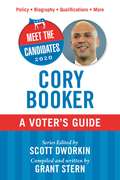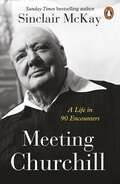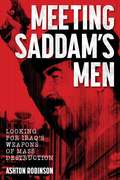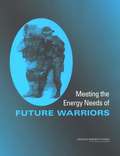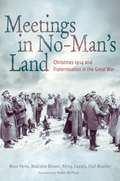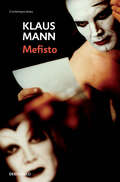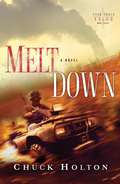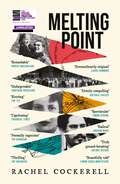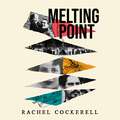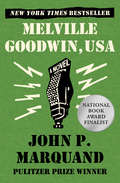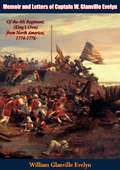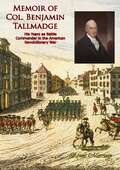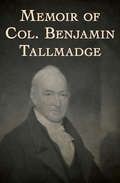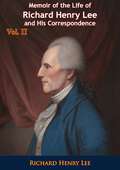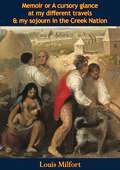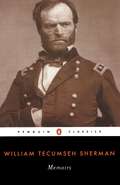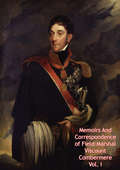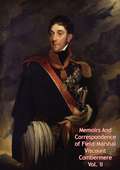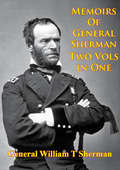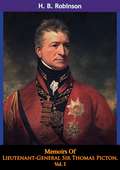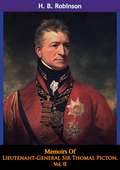- Table View
- List View
Meet the Candidates 2020: A Voter's Guide (Meet the Candidates 2020)
by Scott Dworkin Grant SternKamala Harris is already a contender to take on Donald Trump despite still refining her positions. Learn what makes the lawyer, legislator, and progressive Democrat a strong candidate.Meet the Candidates 2020: Kamala Harris: A Voter’s Guide is your handbook to understanding the candidacy of Kamala Harris and deciding if she deserves your vote in the Democratic primary, and ultimately to take on Donald Trump in the 2020 presidential election.The senator, former prosecutor, and attorney general from California has gained momentum after a strong national showing at the Kavanaugh hearings. She is a strong voice in the Senate, and serves on the Homeland Security and Governmental Affairs Committee, the Select Committee on Intelligence, the Committee on the Judiciary, and the Committee on the Budget. While she is still refining her campaign stances, she has voiced support for gun control, the Green New Deal, lowering middle class taxes, DREAMers, net neutrality, and legalizing marijuana. Meet the Candidates 2020: Kamala Harris: A Voter’s Guide examines how her campaign will solidify, the type of leader she’ll be, and her chances versus Donald Trump in the general election.The Meet the Candidates 2020 series is the informed voter’s guide to making a decision in the 2020 Democratic primary and presidential election. Each book gives an unbiased, political insider’s analysis of each contender, featuring: candidate interviews; an introduction by campaign adviser, Democratic Coalition co-founder, and Dworkin Report host Scott Dworkin; and compilation and writing by Occupy Democrats Editor at Large Grant Stern. In two hours of reading, you’ll understand their defining characteristics, credentials, campaign issues, challenges, presidential chances, and everything else you need to know to decide who should challenge Donald Trump. Whether it’s for Elizabeth Warren, Joe Biden, Bernie Sanders, Kamala Harris, Julian Castro, Cory Booker, or another, Meet the Candidates is what you need to make an informed vote for president in 2020.
Meet the Candidates 2020: A Voter's Guide (Meet the Candidates)
by Grant SternIs Joe Biden the right Democrat to face Trump in 2020? Decide by reading this guide to his policies, accomplishments as vice president to Barack Obama, and complicated past as a Congressman. Even before he decided to run, Joe Biden was the most popular Democratic candidate for president in 2020. On the heels of serving as vice president, and close friend, to Barack Obama, Biden’s resume and likability position the former Congressman from Delaware as the favorite for the nomination. He holds s strong lead in the polls.But Joe Biden’s legacy is much more complicated. He chaired the Foreign Relations and Senate Judiciary Committees, but his treatment of Anita Hill in the Clarence Thomas Supreme Court hearings will be a black mark on his candidacy. He oversaw successful Great Recession relief and the Violence Against Women Act and ultimately received the Presidential Medal of Freedom, but the racial statements from his past will reflect poorly when promoted by Republicans and fellow Democratic candidates. And Biden has faced allegations of inappropriate touching by several women. Meet the Candidates 2020: Joe Biden: A Voter’s Guide will explore these contradictions and help you decide if Biden is your choice for 2020. The Meet the Candidates 2020 series is the informed voter’s guide to making a decision in the 2020 Democratic primary and presidential election. Each book gives an unbiased, political insider’s analysis of each contender, featuring: candidate interviews; an introduction by campaign advisor, Democratic Coalition co-founder, and Dworkin Report host Scott Dworkin; and compilation and writing by Occupy Democrats Editor at Large Grant Stern. In two hours of reading, you’ll understand their defining characteristics, credentials, campaign issues, challenges, presidential chances, and everything else you need to know to decide who should challenge Donald Trump. Whether it’s for Elizabeth Warren, Joe Biden, Bernie Sanders, Kamala Harris, Pete Buttigieg, Cory Booker, or another, Meet the Candidates is what you need to make an informed vote for president in 2020.
Meet the Candidates 2020: A Voter's Guide (Meet the Candidates)
by Grant SternA primer on the policies and candidacy of the Democratic senator from New Jersey, who has made social and racial justice his foundation. Is he the right Democrat to take on Trump?Cory Booker, New Jersey senator and former mayor of Newark, has a voting record measured a third most liberal in his time in the Senate. Meet the Candidates 2020: Cory Booker: A Voter’s Guide helps you understand exactly how liberal Booker is, where on the spectrum Booker sits among Democratic contenders for the presidency, and whether his positions are worthy of your vote.Booker, a voice for social progress and equality and a critic of President Trump, is campaigning on the platform of an end to the war on drugs and drug reform, single-payer healthcare, education reform, environmental reform and the Green New Deal, and criminal justice reform. He sits on the Committee on Environment and Public Works, Committee on Foreign Relations, and the Senate Committee on the Judiciary, where he emerged as a strong voice in the Kavanaugh hearings.The Meet the Candidates 2020 series is the informed voter’s guide to making a decision in the 2020 Democratic primary and presidential election. Each book gives an unbiased, political insider’s analysis of each contender, featuring: candidate interviews; an introduction by campaign adviser, Democratic Coalition co-founder, and Dworkin Report host Scott Dworkin; and compilation and writing by Occupy Democrats Editor at Large Grant Stern. In two hours of reading, you’ll understand their defining characteristics, credentials, campaign issues, challenges, presidential chances, and everything else you need to know to decide who should challenge Donald Trump. Whether it’s for Elizabeth Warren, Joe Biden, Bernie Sanders, Kamala Harris, Julian Castro, Cory Booker, or another, Meet the Candidates is what you need to make an informed vote for president in 2020.
Meeting Churchill: An insightful biography and history of the British Prime Minister through the eyes of those who knew him
by Sinclair McKayThis insightful portrait of Winston Churchill delves beyond well-known political moments, incorporating perspectives from various individuals who encountered him throughout his life.From Bletchley Park codebreakers and Hollywood stars such as Charlie Chaplin, through writers as varied as H. G. Wells and P. G. Wodehouse, to the likes of Harold Wilson, Mahatma Gandhi and Queen Elizabeth II, these lesser-known interactions reveal glimpses of the man behind the legend.We meet Churchill the exuberant schoolboy thug with an early mania for bull-dogs, and Churchill the elder statesman shedding a tear in the House of Commons smoking room. Other incidents include a young journalist rudely dismissing a call from Churchill as a prank, and a visiting Dwight D. Eisenhower dreaming of being strangled, only to awake entangled in Churchill’s borrowed nightshirt.The book showcases the profound transformations during Churchill’s lifetime, which ran from Benjamin Disraeli’s premiership to the release of the Rolling Stones’ ‘Route 66’, and the shift from steam to atomic power. Examining controversial aspects of his legacy, this multifaceted portrait challenges preconceived notions, inviting readers to reconsider the complexities of Churchill.
Meeting Saddam's Men: Looking for Iraq's Weapons of Mass Destruction
by Ashton RobinsonThis book is Ashton Robinson’s unique eye-witness account of the ISG’s operations in Iraq, based at Camp Slayer, in one of Saddam Hussein’s former palaces the group’s task was to search for weapons of mass destruction or to account for them if they did not exist. But the ISG discovered so much more. The ISG unintentionally gained a fascinating insight into Saddam’s dictatorship through interviews with most of ‘the Quartet’, Saddam’s senior committee of trusted lieutenants, and uncovered a web of international corruption surrounding Iraq’s erosion of UN sanctions. The author interweaves his daily experiences in Iraq with interviews with Saddam’s men and historical analysis of pre- and post-war Iraq. He explores Australia’s intelligence relationships with allies and also covers the human rights issues in the coalition occupation of Iraq, as well as the development of the insurgency in Iraq and the rise of ISIL. This story is not just about the Iraq War; it’s a rare look into Australia’s allied intelligence relations, and the international politics, intrigue and corruption surrounding the war.
Meeting the Energy Needs of Future Warriors
by Committee on Soldier Power/Energy SystemsThe central characteristic of the evolution of the combat soldier in recent years is an increasingly sophisticated array of sensing, communications, and related electronics for use in battlefield situations. The most critical factor for maintaining this evolution will be the development of power supply systems capable of operating those electronics effectively for missions up to 72 hours long. To address the challenge, it is important that new approaches be sought on how to integrate and power these electronics. To assist in addressing this problem, the Army requested the National Research Council to review the state of the art and to recommend technologies that will support the rapid development of effective power systems for the future warrior. This report presents the results of that review. It provides an assessment of various technology options for different power level requirements, power system design, and soldier energy sinks. The report also describes future design concepts, focusing on low-power systems. Recommendations for technology development and system design are presented.
Meetings in No Man's Land: Christmas 1914 and Fraternisation in the Great War
by Marc Ferro Malcolm Brown Rémy CazalsThe soldiers 'football match' and the unofficial ceasefire of Christmas 1914 has become a legend of the Great War, but fraternization between enemy troops was actually widespread. In winter 1914, after months of marching, soldiers on both fronts began to dig trenches, and the war became a battle of attrition in which young men faced each other across what was often only a few yards of the muddy, bombed landscape called No Man's Land. Trapped in this devastation the soldiers of both armies experienced a shared feeling of pointlessness that culminated in the unofficial armistice of Christmas 1914, when German and English soldiers laid down their weapons for a few hours of joyful peace and carol singing. Using original research from the best European historians and discovering a history forgotten or lost in censor reports, officer journals and official reports, these brief moments of humanity are explored on all fronts during the long years of conflict.
Meetings in No Man's Land: Christmas 1914 and Fraternisation in the Great War
by Marc Ferro Malcolm Brown Rémy Cazals Olaf MuellerThe soldiers' 'football match' and the unofficial ceasefire of Christmas 1914 has become a legend of the Great War, but fraternization between enemy troops was actually widespread. In winter 1914, after months of marching, soldiers on both fronts began to dig trenches, and the war became a battle of attrition in which young men faced each other across what was often only a few yards of the muddy, bombed landscape called No Man's Land. Trapped in this devastation the soldiers of both armies experienced a shared feeling of pointlessness that culminated in the unofficial armistice of Christmas 1914, when German and English soldiers laid down their weapons for a few hours of joyful peace and carol singing. Using original research from the best European historians and discovering a history forgotten or lost in censor reports, officer journals and official reports, these brief moments of humanity are explored on all fronts during the long years of conflict.
Mefisto (Les\millors Obres De La Literatura Universal, Segle Xx Ser. #Vol. 138)
by Klaus MannEscrita en 1936, Mefisto fue una de las primeras novelas que abordó en toda su crudeza la realidad del Tercer Reich. La patética peripecia personal del protagonista traza un nítido retrato de las circunstancias que posibilitaron la ascensión del nazismo, de la complicidad y el silencio que encontró en los diversos estratos de la sociedad alemana. Se publicó por primera vez en Alemania en 1956 y provocó la ira de quienes se veían reflejados en sus páginas, se vio envuelta en procesos judiciales e incluso fue prohibida durante un tiempo. Reseña:«Situada en la chirriante bisagra entre lo real (político) y lo imaginario (teatral), esta novela reúne la relación sutil y peligrosa entre la vida y la obra del autor.»Michel Tournier
Melnitz
by Charles LewinskyThe international-bestselling saga of a large and colorful Jewish family buffeted from quiet respectability-of-sorts in 1871 to the Nazi death camps of 1945. 1871: cattle-dealer Solomon Meijer has made a reputation for himself as one of the few honest Jews in Endingen, a rare Swiss town in which Jews are allowed to reside. He leads a largely untroubled life, rewarded by his work and comforted at home by his wife and two daughters. But all of this is set to end when he answers a knock at the door in the middle of the night. On the doorstep stands his young distant cousin, Janki, half-dead and begging for refuge. The pitiful figure is invited in and given a coveted place in the bosom of the family, but when Janki recovers and regains his ambition and his fine-looks, he will change the Meijer family's lives for generations to come. . . In the tradition of the great family romances of the 19th century, Melnitz is the saga of the Swiss-Jewish Meijer family, spanning five generations from the Franco-Prussian War to World War II. It is a novel of fate, fortune, and great falls; a homage to the sunken world of Yiddish culture and a celebration of the enduring spirit of biting Jewish humor.
Meltdown (Task Force Valor Series #3)
by Chuck HoltonThe global war on terror has reached catastrophic proportions, leading the U.S. Special Operations team Task Force Valor to Chernobyl, where ghosts of past disasters are nothing compared to the nuclear nightmare about to unfold.
Melting Point: A groundbreaking family history for fans of Edmund de Waal and Philippe Sands
by Rachel Cockerell'A truly radical book; radical in subject, radical in form. For the most tragic reasons, it could not feel more immediate; and yet it's a fluid, fast-paced, hugely enjoyable and engaging read.' - Andrew Marr'Meticulously researched, elegantly constructed, unforgettable.' - Jonathan Freedland'This is an extraordinarily original way of writing memoir, history and truth. An enthralling book and a wonderful new writer.' - Laura CummingOn June 7th 1907, a ship packed with Russian Jews sets sail not to Jerusalem or New York, as many on board have dreamt, but to Texas. The man who persuades the passengers to go is David Jochelmann, Rachel Cockerell's great-grandfather. It marks the beginning of the Galveston Movement, a forgotten moment in history when 10,000 Jews fled to Texas in the lead-up to WWI.The charismatic leader of the movement is Jochelmann's closest friend, Israel Zangwill, whose novels have made him famous across Europe and America. As Eastern Europe becomes infected by anti-Semitic violence, Zangwill embarks on a desperate search across the continents for a temporary homeland: from Australia to Canada, Angola to Antarctica. He reluctantly settles on Galveston, Texas. He fears the Jewish people will be absorbed into the great American melting pot, but there is no other hope. In a highly inventive style, Cockerell uses exclusively source material to capture history as it unfolds, weaving together letters, diaries, memoirs, newspaper articles and interviews into a vivid account of those who were there. Melting Point follows Zangwill and the Jochelmann family through two world wars, to London, New York and Jerusalem - as their lives intertwine with some of the most memorable figures of the twentieth century, and each chooses whether to cling to their history or melt into their new surroundings. It is a story that asks what it means to belong, and what can be salvaged from the past.
Melting Point: LONGLISTED FOR THE 2024 BAILLIE GIFFORD PRIZE FOR NON-FICTION
by Rachel CockerellLONGLISTED FOR THE BAILLIE GIFFORD PRIZEA TIMES & SUNDAY TIMES BOOK OF THE YEARA NEW STATESMAN BOOK OF THE YEARA SPECTATOR BOOK OF THE YEARONE OF THE CONVERSATION'S 5 BEST NON-FICTION BOOKS OF 2024'A truly radical book; radical in subject, radical in form. For the most tragic reasons, it could not feel more immediate; and yet it's a fluid, fast-paced, hugely enjoyable and engaging read.' - Andrew Marr'Unforgettable... Non fiction will be different as a result.' - Jonathan Freedland'This is an extraordinarily original way of writing memoir, history and truth. An enthralling book and a wonderful new writer.' - Laura Cumming'So fascinating, so enjoyable, and beautifully told through diaries, memoirs, speeches and newspapers.' - Simon Sebag Montefiore'a remarkable book.' - Robert MacfarlaneOn June 7th 1907, a ship packed with Russian Jews sets sail not to Jerusalem or New York, as many on board have dreamt, but to Texas. The man who persuades the passengers to go is David Jochelmann, Rachel Cockerell's great-grandfather. It marks the beginning of the Galveston Movement, a forgotten moment in history when 10,000 Jews fled to Texas in the lead-up to WWI.The charismatic leader of the movement is Jochelmann's closest friend, Israel Zangwill, whose novels have made him famous across Europe and America. As Eastern Europe becomes infected by anti-Semitic violence, Zangwill embarks on a desperate search across the continents for a temporary homeland: from Australia to Canada, Angola to Antarctica. He reluctantly settles on Galveston, Texas. He fears the Jewish people will be absorbed into the great American melting pot, but there is no other hope. In a highly inventive style, Cockerell uses exclusively source material to capture history as it unfolds, weaving together letters, diaries, memoirs, newspaper articles and interviews into a vivid account of those who were there. Melting Point follows Zangwill and the Jochelmann family through two world wars, to London, New York and Jerusalem - as their lives intertwine with some of the most memorable figures of the twentieth century, and each chooses whether to cling to their history or melt into their new surroundings. It is a story that asks what it means to belong, and what can be salvaged from the past.
Melville Goodwin, USA: A Novel
by John P. MarquandFinalist for the National Book Award: This sweeping novel set in the aftermath of World War II reveals the story behind the creation of an American icon Major General Melville A. Goodwin, the son of a druggist, served in two world wars, rising through the ranks to take command of an armored division. He was a hero long before he braved a hail of bullets to save a fellow American in postwar Berlin, but until that mad act of courage, no one outside of the military had ever heard of him. That is all about to change: A weekly news magazine has convinced the major general to sit down for an extended interview at the home of Sid Skelton, a popular radio commentator and former army buddy of Goodwin's. Over the course of many hours, Goodwin tells the story of his life--from his small-town childhood to his years at West Point, his battlefield traumas, his marriage to an ambitious woman who helped shape his military career, and his impressions of the world as seen through the barbed wire of far-flung army posts. Of primary interest to Skelton, however, is Dottie Peale, the vivacious journalist Goodwin romanced in war-torn France. Skelton is a little bit in love with her himself, and now that the major general is in the news, Dottie plans to make a dramatic return to his life. At the moment of his greatest triumph, Goodwin will discover that his marriage and career are under threat.
Memoir and Letters of Captain W. Glanville Evelyn: Of the 4th Regiment, (King's Own) from North America, 1774-1776
by William Glanville EvelynCapt. William Glanville Evelyn, born 1742 in Ireland to English parents, was posted to America during the period just prior to the outbreak of the American Revolution, joining the British forces occupying Boston. He participated in the events at Lexington and Concord in April, 1775, removed to New York with Howe and died in November, 1776 as a result of wounds received near White Plains. This collection consists of 16 letters written by Glanville to his father and uncle.-Print ed.
Memoir of Col. Benjamin Tallmadge: His Years as Battle Commander in the American Revolutionary War
by Benjamin Tallmadge“Benjamin Tallmadge narrates his time spent as a military officer during the American Revolutionary War, detailing his roles as both commander and intelligence gatherer. Renowned for his successes during the American Revolution, Benjamin Tallmadge commences these memoirs with a brief family history. After this short introduction, he immediately describes his military training and deployment, and the witnessing of his first battle close to New York City. Stricken and steeled by the carnage of war, the young Tallmadge expresses his wish to see the Revolution to its very end. Upon demonstrating a keen sense of tactics, and mounting a successful raid wherein the supplies and premises of an enemy force were burned by Tallmadge and his fellow operatives, George Washington praised the officer's abilities. Throughout the conflict, Tallmadge proved an able spymaster; heading up the Culper Ring, a network of agents whose information in and around the New York area would prove extremely valuable to the war effort.”-Print ed.
Memoir of Col. Benjamin Tallmadge: Prepared By Himself, At The Request Of His Children (classic Reprint)
by Col. Benjamin TallmadgeThe Revolutionary War colonel—and leader of the famed Culper Spy Ring—tells his story in this fascinating historical autobiography. When British troops defeated the Continental Army on Long Island, General George Washington was forced to abandon New York in order to save the revolution. The British established their headquarters in New York City—beginning an occupation that would last the length of the war. Priceless intelligence flowed through the city&’s harbor, and Washington wanted to claim it as his own. To Benjamin Tallmadge, a young officer of the Continental Army, the general assigned an impossible mission: Infiltrate New York, establish a spy network, and report everything the British know. Throughout the war, Tallmadge and his spies collected intelligence on troop movements, sneak attacks, and the treachery of Benedict Arnold. Nearly two and a half centuries later, the heroic exploits of the Culper Spy Ring have served as the inspiration for the acclaimed TV series Turn: Washington&’s Spies and the video game Assassin&’s Creed III. In this lively and engaging memoir, the days of revolution are remembered by a patriot who fought in the shadows—and helped redefine the nature of espionage.This ebook has been professionally proofread to ensure accuracy and readability on all devices.
Memoir of the Life of Richard Henry Lee and His Correspondence Vol. II (Memoir of the Life of Richard Henry Lee and His Correspondence #2)
by Richard Henry LeeRichard Henry Lee was a planter, merchant, politician, and a member of the prominent Lee family of Virginia. Son of Thomas Lee, Richard Henry Lee pursued his father’s interest in westward expansion and was a key political figure during the American Revolution (1775–1783): it was Lee who, at the Second Continental Congress in 1776, made the motion to declare independence from Britain. Lee began his career as a justice of the peace for Westmoreland County (1757); he later served as a member of the House of Burgesses (1758–1775), the House of Delegates (1777, 1780, 1785), and the United States Senate (1789–1792). He also represented Virginia at the two Continental Congresses (1774–1779, 1784–1787) and served as president of Congress in 1784. In 1792 Lee retired from public service, citing his poor health. He passed away two years later at Chantilly-on-the-Potomac, his estate in the Northern Neck of Virginia. Lee was mired in controversy throughout his political career, and his legacy has been influenced in part by his enemies. But Lee’s prominent role in the events that shaped Virginia and the nation in the mid- to late seventeenth century cannot be denied; it places him high on the list of America’s forgotten founders.-Encyclo. VirginiaThis collection was gathered by Lee's grandson. Contains many of Lee's recollections and letters relating the American Revolution and the debates on the Declaration of Independence in the Continental Congress.
Memoir or A cursory glance at my different travels & my sojourn in the Creek Nation
by Louis MilfortJean-Antoine Le Clerc, also known as Louis Milfort, also spelled as Milford (February 2, 1752 - 1817/1820) was a French military officer and adventurer who led Creek Indian warriors during the American Revolutionary War as allies of the British. He emigrated to the British Colonies in North America in 1775. Beginning in 1776, he lived with the Creek Indians of the Upper Towns for about 20 years in frontier territory of present-day Alabama. He became a member of the Creek Confederacy, and eventually rose to Grand War Chief, commander of all Creek forces.Milford's Memoirs "has provided us with a tale that reflects an intimate knowledge of the Indians, their way of life and their manner of carrying on warfare as well as their relations with the English, American, French and Spaniards who were competing for the trade with the natives over whose territory they were trying to gain control,"
Memoirs
by Michael Fellman William Tecumseh ShermanBefore his spectacular career as General of the Union forces, William Tecumseh Sherman experienced decades of failure and depression. Drifting between the Old South and new West, Sherman witnessed firsthand many of the critical events of early nineteenth-century America: the Mexican War, the gold rush, the banking panics, and the battles with the Plains Indians. It wasn't until his victory at Shiloh, in 1862, that Sherman assumed his legendary place in American history. After Shiloh, Sherman sacked Atlanta and proceeded to burn a trail of destruction that split the Confederacy and ended the war. His strategy forever changed the nature of warfare and earned him eternal infamy throughout the South. Sherman's Memoirs evoke the uncompromising and deeply complex general as well as the turbulent times that transformed America into a world power. This Penguin Classics edition includes a fascinating introduction and notes by Sherman biographer Michael Fellman.
Memoirs And Correspondence of Field-Marshal Viscount Combermere Vol. I (Memoirs And Correspondence of Field-Marshal Viscount Combermere #1)
by Field Marshal Stapleton CottonField Marshal Stapleton Cotton, 1st Viscount Combermere GCB GCH KSI PC (14 November 1773 - 21 February 1865), was a British Army officer, diplomat and politician. As a junior officer he took part in the Flanders Campaign, in the Fourth Anglo-Mysore War and in the suppression of Robert Emmet's insurrection in 1803. He commanded a cavalry brigade in Sir Arthur Wellesley's Army before being given overall command of the cavalry in the latter stages of the Peninsular War. He went on to be Commander-in-Chief, Ireland and then Commander-in-Chief, India. In the latter role he stormed Bharatpur--a fort which previously had been deemed impregnable.This book, which was published in two volumes, represents Viscount Combermere's memoirs in the form of a vast collection of his private papers, as collated by his third wife, Mary, Viscountess Combermere. They serve to provide an invaluable and comprehensive view of the public and private life of one of England's most distinguished soldiers.
Memoirs And Correspondence of Field-Marshal Viscount Combermere Vol. II (Memoirs And Correspondence of Field-Marshal Viscount Combermere #2)
by Field Marshal Stapleton CottonField Marshal Stapleton Cotton, 1st Viscount Combermere GCB GCH KSI PC (14 November 1773 - 21 February 1865), was a British Army officer, diplomat and politician. As a junior officer he took part in the Flanders Campaign, in the Fourth Anglo-Mysore War and in the suppression of Robert Emmet's insurrection in 1803. He commanded a cavalry brigade in Sir Arthur Wellesley's Army before being given overall command of the cavalry in the latter stages of the Peninsular War. He went on to be Commander-in-Chief, Ireland and then Commander-in-Chief, India. In the latter role he stormed Bharatpur--a fort which previously had been deemed impregnable.This book, which was published in two volumes, represents Viscount Combermere's memoirs in the form of a vast collection of his private papers, as collated by his third wife, Mary, Viscountess Combermere. They serve to provide an invaluable and comprehensive view of the public and private life of one of England's most distinguished soldiers.
Memoirs Of General Sherman - 2nd. Edition, Revised And Corrected [Illustrated - 2 Volumes In One]
by General William Tecumseh ShermanIncludes Civil War Map and Illustrations Pack - 224 battle plans, campaign maps and detailed analyses of actions spanning the entire period of hostilities.Among the greatest memoirs ever produced during the 19th Century; and a classic of American Literature, the autobiography of General William Tecumseh Sherman is a fantastic read that reveals not only his experiences of the Civil War but Sherman as a man.Not Just a book for military buffs Sherman paints a picture of himself and his contemporaries that does not always fit with preconceptions; not an unfeeling monster who ignored the cost of the war that he pursued: "I am tired and sick of war. Its glory is all moonshine. It is only those who have neither fired a shot nor heard the shrieks and groans of the wounded who cry aloud for blood, for vengeance, for desolation. War is hell." A firm and loyal friend to those who stuck by him, especially his close adherent the future President U.S. Grant of whom he wrote; "Grant stood by me when I was crazy and I stood by him when he was drunk and now we stand by each other."However, perhaps understandably the majority of the memoirs relate to his great achievements as a soldier during the upheavals of the Civil War. They are as detailed and vivid as any other recollections written of the Civil War and the author displays a rare knack of explaining the operations in light of the wider struggle.Highly recommended.This edition of the great General's memoirs is the second edition which was revised and amended from the first after inaccuracies had been corrected and as such is the definitive article.
Memoirs Of Lieutenant-General Sir Thomas Picton, Vol. I (Memoirs Of Lieutenant-General Sir Thomas Picton)
by H. B. RobinsonWhen Lt.-General Thomas Picton fell during a furious bayonet charge he left behind a legacy of hard fighting, high courage, volatile temper and much military glory accrued at the head of his fighting 3rd Division. In this excellent and very detailed biography, based on the Generals own private letters, recounts his long service and glittering career in the Peninsular War and the Waterloo Campaign.Includes over 100 maps of the actions, engagements and battles of the entire Peninsular War.
Memoirs Of Lieutenant-General Sir Thomas Picton, Vol. II (Memoirs Of Lieutenant-General Sir Thomas Picton)
by H. B. RobinsonWhen Lt.-General Thomas Picton fell during a furious bayonet charge he left behind a legacy of hard fighting, high courage, volatile temper and much military glory accrued at the head of his fighting 3rd Division. In this excellent and very detailed biography, based on the Generals own private letters, recounts his long service and glittering career in the Peninsular War and the Waterloo Campaign.Includes over 100 maps of the actions, engagements and battles of the entire Peninsular War.


